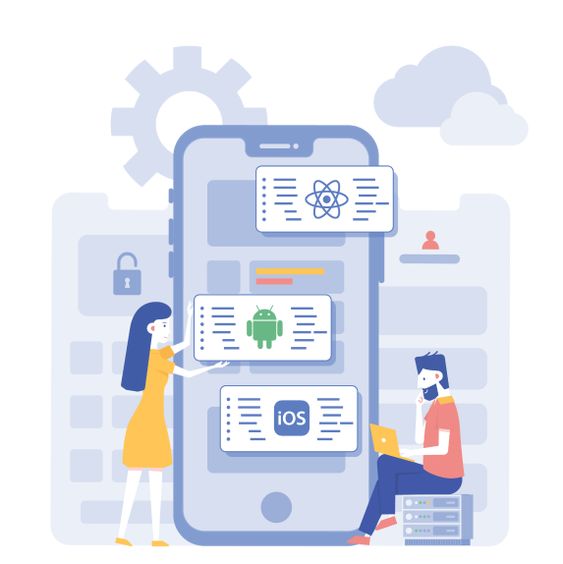I. Introduction
In the fast-paced world of web development, Application Programming Interfaces (APIs) have emerged as essential components that enable seamless communication between applications and services. APIs play a crucial role in modern web development by facilitating data exchange and integration, promoting interoperability, and empowering developers to build feature-rich web applications. This article delves into the significance of APIs in the digital era, their diverse applications, and the impact they have on shaping the landscape of modern web development.
II. Understanding APIs in Modern Web Development
A. API as a Bridge Between Applications and Data
At its core, an API acts as a bridge that allows different applications to communicate with each other. It enables developers to access certain functionalities or data from external services and incorporate them into their applications without having to understand the underlying implementation details.
B. The Role of APIs in Facilitating Client-Server Communication
APIs play a pivotal role in enabling client-server communication. They define the rules and protocols for how clients (front-end applications) can interact with servers (back-end services), ensuring a standardized and efficient data exchange.
C. Types of APIs: Web APIs and Their Versatility in Web Development
Web APIs, also known as HTTP APIs or RESTful APIs, are among the most prevalent types of APIs used in web development. They leverage the HTTP protocol to enable communication between web applications and external services. The versatility of web APIs makes them suitable for a wide range of use cases, from retrieving data from remote servers to integrating third-party services.
D. Advantages of Using APIs in Web Development
The use of APIs in web development offers several advantages, including code reusability, modularity, and faster development cycles. APIs abstract complex functionalities, simplifying the development process and accelerating the delivery of new features and services.
III. RESTful APIs: The Backbone of Modern Web Services
A. Introduction to RESTful APIs and Their Key Characteristics
Representational State Transfer (REST) is an architectural style for designing networked applications. RESTful APIs adhere to REST principles and leverage HTTP methods (GET, POST, PUT, DELETE) to interact with resources over the web.
B. RESTful API Design Principles: Resources, URIs, Methods, and Representations
The design of RESTful APIs revolves around resources, which are identified by Uniform Resource Identifiers (URIs). HTTP methods are used to perform operations on these resources, and representations in various formats (JSON, XML) are used to transfer data.
C. RESTful API vs. SOAP: Understanding the Differences
RESTful APIs and Simple Object Access Protocol (SOAP) are two popular approaches for building web services. This section highlights the differences between the two and the reasons behind the widespread adoption of RESTful APIs.
D. Examples of RESTful API Integration in Real-World Web Applications
Real-world examples illustrate how RESTful APIs are integrated into web applications to access data, enable user interactions, and enhance functionality. From weather APIs to social media integrations, the versatility of RESTful APIs is showcased in various use cases.
IV. API Integration: Connecting Applications and Services
A. Integrating Third-Party APIs to Enhance Functionality
Third-party APIs offer a plethora of services, including payment gateways, geolocation data, social media sharing, and more. By integrating these APIs into their applications, developers can extend the functionality of their projects and provide enhanced user experiences.
B. The Role of APIs in Enabling Data Sharing Among Different Applications
API integration facilitates data sharing and synchronization between different applications. Businesses can leverage this capability to consolidate data from multiple sources, streamline workflows, and gain valuable insights.
C. Common Challenges and Solutions in API Integration
API integration presents certain challenges, such as handling data inconsistencies, ensuring data security, and managing API versioning. This section explores the common challenges faced by developers and provides practical solutions to overcome them.
V. Data Exchange and Interoperability
A. Enabling Seamless Data Exchange Between Applications
APIs act as intermediaries that facilitate data exchange between applications with different data formats and structures. The data is transformed and presented in a standardized format, ensuring seamless communication between diverse systems.
B. Importance of Data Formats in API Communication: JSON, XML, and Beyond
JSON (JavaScript Object Notation) and XML (Extensible Markup Language) are the most widely used data formats in API communication. Each format has its strengths and is chosen based on the specific requirements of the application.
C. Data Security and Privacy Considerations in API Data Exchange
Data security and privacy are paramount in API data exchange. Implementing encryption, authentication, and access controls are essential to protect sensitive data and prevent unauthorized access.
VI. API Security: Safeguarding Data and Systems
A. Understanding API Security Risks and Vulnerabilities
APIs are potential targets for security breaches, making API security a critical concern for developers. This section explores common security risks and vulnerabilities associated with APIs and the consequences of inadequate security measures.
B. Best Practices for API Security: Authentication and Authorization
Implementing robust authentication and authorization mechanisms is crucial for securing APIs. Techniques such as OAuth and API keys help control access to resources and ensure that only authorized users can interact with the API.
C. API Security Mechanisms: OAuth, API Keys, and Rate Limiting
OAuth is a widely adopted protocol for securing APIs and allowing secure access to user data. API keys serve as access tokens to identify and authenticate clients, while rate limiting prevents abuse and ensures fair resource allocation.
D. The Role of CORS in Secure Cross-Origin Communication
Cross-Origin Resource Sharing (CORS) is an essential security feature that restricts web pages from making unauthorized requests to a different domain. Properly configuring CORS policies ensures secure cross-origin communication.
VII. API Documentation: Facilitating Developer Onboarding
A. The Importance of Comprehensive API Documentation
Comprehensive API documentation is instrumental in guiding developers on how to use the API effectively. Well-documented APIs reduce the learning curve, increase developer productivity, and encourage third-party integrations.
B. Creating Clear and User-Friendly API Documentation
Tips and best practices for creating clear and user-friendly API documentation are discussed in this section. Developers should focus on providing detailed descriptions of endpoints, request parameters, response formats, and error codes.
C. Tools and Platforms for Generating API Documentation
Numerous tools and platforms facilitate the automatic generation of API documentation from source code. These tools simplify the documentation process and ensure consistency in the documentation structure.
VIII. Microservices Architecture and APIs
A. Microservices: A Modern Architectural Approach in Web Development
Microservices architecture is a design pattern that advocates breaking down a monolithic application into smaller, independent services. APIs play a fundamental role in facilitating communication between these microservices.
B. The Role of APIs in Decoupling and Scalability of Microservices
APIs enable the decoupling of microservices, allowing each service to evolve independently without impacting others. The modularity achieved through APIs makes the scaling and maintenance of microservices more manageable.
C. Advantages and Challenges of Microservices and API-Based Architect
ures
While microservices offer scalability and flexibility, they also introduce new challenges related to inter-service communication, data consistency, and monitoring. Proper API design and management are essential to overcoming these challenges.
IX. The Impact of APIs on Web Development Tools
A. API-Driven Development: Leveraging APIs in the Development Process
API-driven development is a development approach that centers on APIs as the foundation of applications. Tools and frameworks that facilitate API-driven development streamline the process of integrating APIs into the development workflow.
B. API Testing and Monitoring: Ensuring Reliability and Performance
Thorough API testing and monitoring are vital to ensure the reliability and performance of web applications. Testing tools and monitoring platforms help detect and address issues, resulting in improved application stability.
C. API Management Platforms: Streamlining API Lifecycle and Governance
API management platforms simplify the process of designing, developing, and managing APIs. These platforms provide essential features like version control, access control, and analytics, streamlining the API lifecycle.
X. API Design Best Practices
A. Building Robust and User-Friendly APIs: Design Principles and Patterns
Adhering to API design best practices ensures that APIs are robust, scalable, and user-friendly. Clean API designs with clear endpoints, proper error handling, and consistent naming conventions enhance usability.
B. Versioning APIs: Ensuring Backward Compatibility
Versioning APIs is essential to accommodate changes and updates without breaking existing client applications. Proper versioning ensures backward compatibility and smooth transitions.
C. Error Handling and Status Codes: Enhancing API Usability
Effective error handling and status codes are critical for API usability. Meaningful error messages and proper HTTP status codes help developers understand and respond to API responses appropriately.
XI. Future Trends in API Development
A. GraphQL: A Query Language for APIs
GraphQL is an emerging query language for APIs that provides more flexible and efficient data retrieval. It allows clients to request precisely the data they need, reducing over-fetching and under-fetching.
B. Serverless Architecture and APIs
Serverless architecture, where developers focus on writing functions rather than managing servers, complements API development. Serverless APIs offer improved scalability and cost efficiency.
C. AI and ML Integration in APIs
The integration of Artificial Intelligence (AI) and Machine Learning (ML) capabilities into APIs opens up new possibilities for intelligent and data-driven applications. APIs that offer AI-powered services enable developers to incorporate advanced functionalities with ease.
XII. Conclusion
In conclusion, APIs are integral to modern web development, acting as the backbone that facilitates data exchange, integration, and communication between applications and services. RESTful APIs have become a standard for web services due to their simplicity and versatility. With the rise of microservices architecture and the growing adoption of AI and ML, APIs will continue to shape the future of web development. Proper API design, security, and documentation are essential to harness the full potential of APIs and create robust, scalable, and user-friendly web applications. Embracing APIs as core components of web development empowers developers to create innovative and feature-rich web experiences that meet the demands of the digital age.





